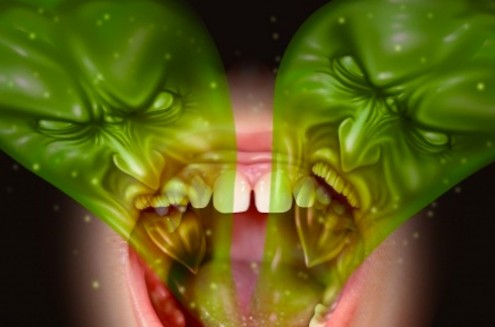People are relying more and more on new oral hygiene products than actual dental cleanings. Even though these products may do a good job at cleaning up your teeth and simulating a healthy appearance on the upper layers of gum tissue, according to Robert H. Gregg II, DDS, there may be problems lurking in deeper layers.
Dangers of Bad Oral Hygiene
While every dentist will recommend that you brush, floss, and rinse with mouthwash a few times a day, many Americans are still not taking proper care of their mouths. Letting waste accumulate under your gums can cause plaque, and excessive amounts of plaque can lead to gum disease. It gets worse; the longer plaque has been left unchecked in your mouth, the harder it will be to get rid of.
Getting dentures can shave up to 10 years off a person’s life, so Dr. Gregg advises you to take the proper steps for a healthy mouth by flossing around the teeth and in the deeper layers of gum tissue, and regularly visiting your dentist for cleanings. Advanced toothbrushes, called “power toothbrushes” in the dental industry, may do a better job at polishing but do not have any significant advantage over old-fashioned toothbrushes when it comes to impacting gum health.
Tooth implants were once thought of as a “magic bullet,” but dentists today are learning they may not be such a good solution. Europe experiences a 40 percent failure rate, and the United States failure rate is around 25 percent. As a response, new protocols have been developed to defend against failing implants.
Advancing Gum Disease Treatment
If gum disease is becoming a very real problem for you, modern advances are providing better solutions than times past. What Dr. Gregg once called “hopeless teeth” may now have some hope after all. When those patients arrive at his clinic, he says that they are “not here to take the teeth out, but here to save.”
Proper dental hygiene at home, coupled with regular visits to your dentist, can keep your mouth and gums healthy. If you are starting to see red each time you brush your teeth, or your gums bleed after flossing, it could be an early indication of gum disease.
Schedule an appointment with your dentist to rule out gum disease, or treat it early on. Dr. Gregg especially encourages adults in their late 20s or early 30s to come in early and treat any potential gum disease while it’s still reversible.
In the accompanying audio segment, Robert H. Gregg II, DDS, joins Dr. Mike Smith to share the latest advancements in treating gum disease.
Treatment for gum disease can vary depending on how severe your case is.
Additional Info
- Segment Number: 3
- Audio File: healthy_talk/1515ht2c.mp3
- Featured Speaker: Robert H. Gregg II, DDS
- Organization: LANAP
-
Guest Bio:
 Dr. Robert Gregg is a former faculty member at UCLA School of Dentistry, Section of Hospital Dentistry.
Dr. Robert Gregg is a former faculty member at UCLA School of Dentistry, Section of Hospital Dentistry.
He has been using lasers clinically since August 1990, including CO2, free-running pulsed (FRP) Nd:YAG, both single- and variable-pulsed; FRP Ho:YAG, surgical Argon, CW Diodes, and Er:YAG. He has given lectures nationally and internationally on the subject of clinical laser applications.
Dr. Gregg is a co-developer of the FDA-cleared PerioLase® MVP-7™ pulsed Nd:YAG laser, and is a co-developer and patent holder of the LANAP® laser periodontitis treatment. He maintains a group private practice where he sees patients. - Length (mins): 10
- Waiver Received: No
- Host: Mike Smith, MD
Published in
Healthy Talk w/ Dr. Michael Smith
Tagged under
